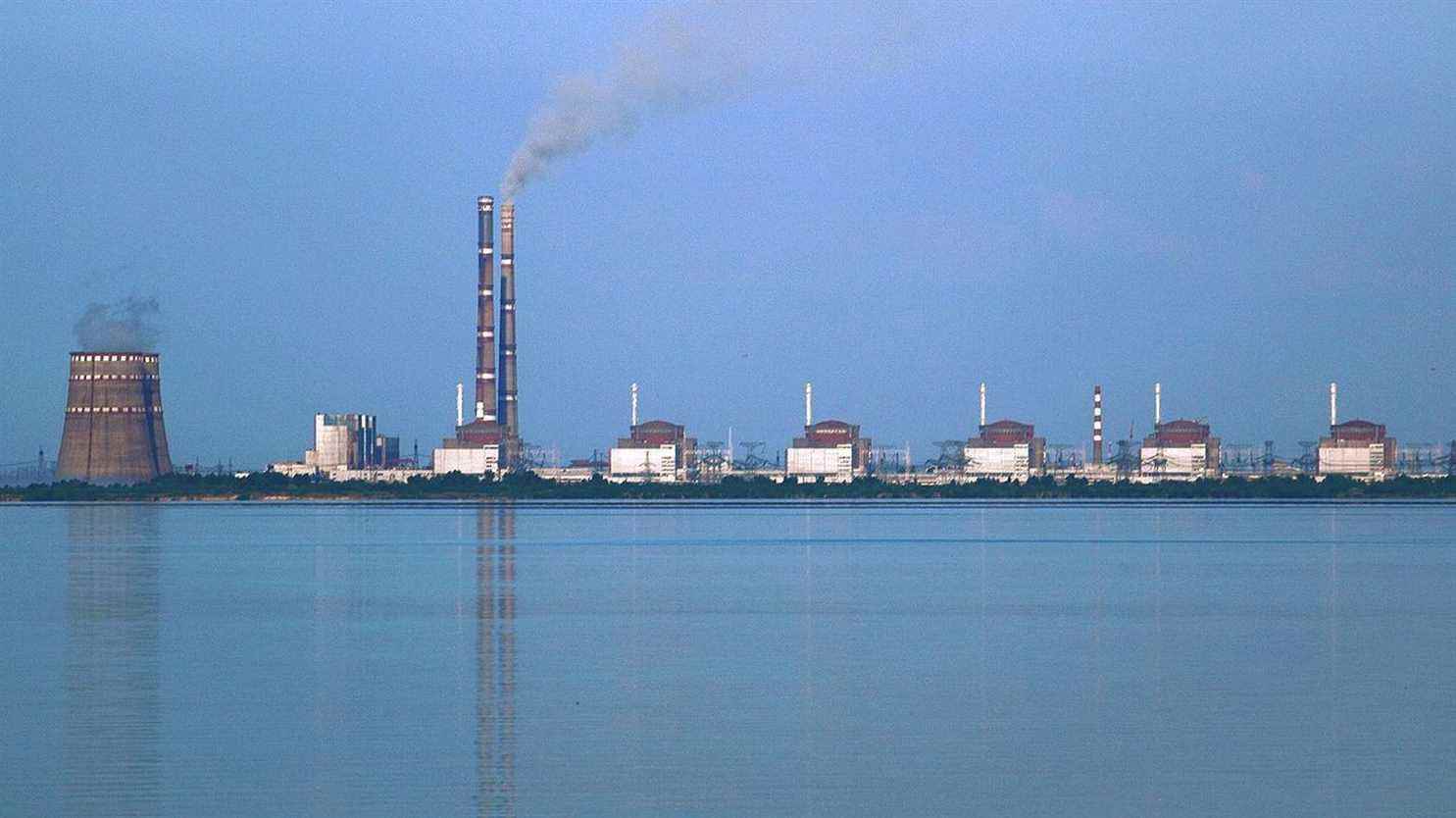After the former Chernobyl power plant, under the control of the Russian army since February 24, it is a new nuclear site that worries Ukraine and Europe. During the night of Thursday to Friday, the Russian army captured the Zaporizhia power plant in southern Ukraine, the largest in Europe.
>> Follow the evolution of the Russian-Ukrainian conflict in our live
During this attack, Russian artillery fire caused a fire within the installation – an inferno finally brought under control in the early morning by Ukrainian firefighters. Franceinfo takes stock of the situation around the nuclear site.
The attack on the plant took place in the middle of the night
According to the Ukrainian authorities, the Russian army fired several shots at the Zaporizhia power plant on the night of March 3 to 4, before taking control of the plant’s perimeter. Affected by these bombings, a building adjoining the site caught fire, still according to Kiev. It housed training spaces as well as a laboratory. No reactor was affected despite the violence of the explosions, which were filmed by a site surveillance camera.
⚡️⚡️⚡️Surveillance cameras captured moments of the shelling of the #Zaporizhzhia MPN pic.twitter.com/ZNLX4pZeXI
— NEXTA (@nexta_tv) March 4, 2022
Called to the scene, Ukrainian firefighters were first blocked by Russian soldiers, before being able to access the site and finally put out the fire around 6 a.m. (local time). the Ukrainian Emergency Service announced on its account Facebook that the blaze had summer “liquid” – a term which means that the combustion is stopped and that no resumption is to be feared.
“The director of the plant said that nuclear safety is now guaranteed”, also added on Facebook Oleksandre Staroukh, head of the military administration of the Zaporizhia region. At the time of the fire, the area was in the throes of fighting between Russian troops and Ukrainian forces, as reported by Dimitro Orolov, the husband of Enerhodar, a town located a few kilometers from the Zaporizhia power plant. Earlier on Thursday, Kiev had also informed the International Atomic Energy Agency (IAEA) that Russian tanks and infantry were near this city.
No radioactive leak was detected
The fire did not cause any casualties, apart from two security guards who were slightly injured. Nor did it cause any radioactive leak. This was assured by the Ukrainian nuclear regulator to the IAEA, which attests for the moment that the levels of radioactivity are unchanged on the site of the plant and in its surroundings. No equipment “essential” was otherwise damaged, the IAEA said.
In a statement released Friday morning (link in English), the Ukrainian regulator specified that its crisis center was mobilized, and that the teams of the plant continued to monitor the reactors despite the occupation of the site by the Russian army. Of the six reactors, only reactor number 4 continues to operate normally. Reactor number 1 is down, the next two have been disconnected from the network and are being cooled, as are reactors number 5 and 6.
Later in the morning, Rafael Mariano Grossi, the Director General of the IAEA, reacted to this attack by recalling the need for “preserve the physical integrity of the installations, maintain the security systems (…) and allow the teams of the power plants to work normally”. “It’s lucky that there was no radioactive leak”, he said at a press conference (link in English)before declaring that he was ready to surrender “as soon as possible” in Ukraine to ensure that all nuclear security measures are respected.
Concern grows around Ukrainian nuclear sites
This attack and the fire that ensued caused a wave of panic to blow in Ukraine and around the world. While the fire had not yet been officially brought under control, Dmytro Kuleba, Ukraine’s Foreign Minister, has urged the Russian military to stop shelling the plant site. “If it explodes, it will be ten times bigger than Chernobyl! The Russians must cease fire immediately!” he warned on Twitter.
For his part, the Ukrainian President, Volodymyr Zelensky, accused the Russian army of deliberate destruction on this highly strategic site. “These tanks [russes] are equipped with thermal sights so they know what they are doing, they were prepared”, he said in particular on Friday morning in a video published by the Ukrainian presidency. He thus has accused Moscow of resorting to “nuclear terror” and to want “repeat” the Chernobyl disaster, the worst in history, in 1986.
With its six reactors, Zaporizhia nuclear power plant supplies much of Ukraine with electricity. The country also has three other power stations, for a total of 15 reactors, and these facilities could cause terrible disasters if they were bombed. The Ukrainian situation worries as far as France, where the Minister of Ecology, Barbara Pompili, called on Franceinfo on Friday to “to sanctuary these places” in order to avoid any firing on the power stations and their surroundings.
